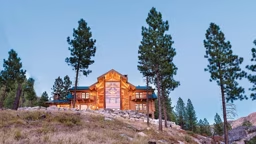So you’re ready to buy land, but you don’t exactly have the time (or gas money) to travel all over the country looking for it. But that doesn’t mean you have to resort to building your dream log home in your neighbor’s backyard. Take your quest for land to today’s version of the Oklahoma Land Rush—the Internet. There are a plethora of sites dedicated to selling land. These sites trump scattered ads in local papers, which usually don’t carry many “land” listings and quickly become obsolete, according to Allen Shannon of LandsOfAmerica.com, a national land-listing site.
 Still, don’t fall for the immediate gratification of buying online. To make sure your land is a prime cut, invest some time into prioritizing and research. Your two best tools for making a good decision: your gut and these land-shopping tips.
Still, don’t fall for the immediate gratification of buying online. To make sure your land is a prime cut, invest some time into prioritizing and research. Your two best tools for making a good decision: your gut and these land-shopping tips. Aim Before You Shoot
Most land-listing sites allow you to filter your search results by a variety of factors including access to “the grid” and main roads, views, terrain (lakeside, mountainside, forest). Manage your time by weeding out land that doesn’t meet your needs.
Get Organized
Once you figure out what type of land you’re looking for, go online and find it. Rudy Nielson, who has been buying land for over 35 years and runs NIHO Land & Cattle Company Ltd., Western Canada’s leading expert in recreational real estate, has developed a formula for purchasing land online.
The first step: do your homework. “I don’t go by location, location, location. I go by research, research, research, because you’ve already got location pinned down,” says Rudy, “The biggest mistake people make is not spending any money on research.”
He suggests creating a file folder for each property you’re interested in. (Consider six to10 parcels and compare them side-by-side.)
Organize the standard listing information and photos (if they’ve been provided), then, ask the owner/seller for additional information including aerial photos, maps of access roads, gas, power and utility lines, topographic maps (beware of swamps marked as “wetlands”) and pictures of the land from as many angles as possible. If the owner can’t assist you, check with the local park or forestry service. Ultimately, you want to “make the owners do your work,” advises Rudy. With these items, you can literally see the lay of the land. If anything is unclear, ask follow-up questions.
Always Negotiate
This may be the hardest part for most potential landowners, says Rudy, and having the right combination of guts and patience is essential. Don’t rush into a decision. ”If you lose the parcel, big deal,” says Rudy. Don’t know where to start with the asking price? Check for a sales history of the area, which you can usually get from a county records office or a local realtor association chapter. Compare the amenities and terrain of recently sold plots to yours for target bid. (Simply put, if a neighboring property with access roads and a water view sold for $100,000, and the land you’re considering has neither, you’re going to want to aim a bit lower.)And while you technically don’t have to step away from your laptop to buy land, we recommend that, before plunking down cash, you travel to the property to make sure it feels right because this is where the dream begins.
Want to get your land search started? Browse over 45,000 land listings.











